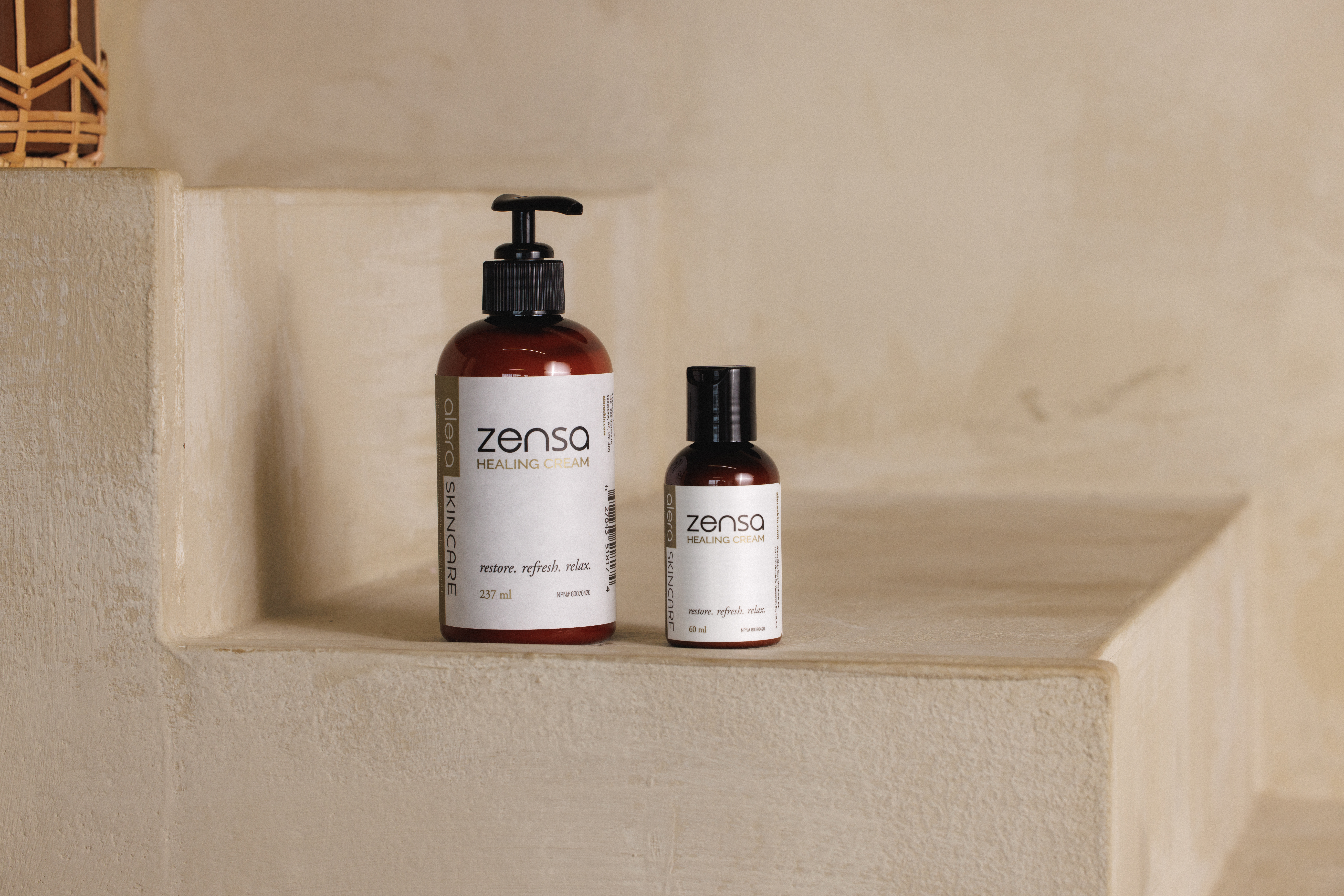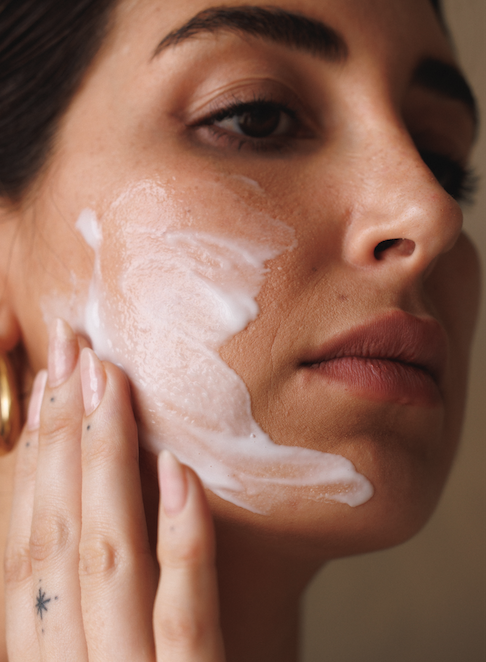The Essential Fall Skincare Switch-Up: What to Add and What to Remove
The Essential Fall Skincare Switch-Up: What to Add and What to Remove
Navigating your skincare routine during changing seasons involves being in tune with what your skin does and does not need (and acting accordingly). Perhaps the dipping temperatures cause your skin to experience flakiness and dryness, which would require a routine that replenishes that much-needed moisture. Or maybe the seasonal changes trigger cumbersome breakouts or inflammatory skin conditions like eczema and psoriasis, in which case using gentle, sensitive skin-friendly ingredients would be appropriate. In any case, this is the time of year to revisit your skincare ritual. Keep reading to learn what changes your skin goes through during the transition period between summer to fall — plus, how to ensure it looks and feels healthy.

Expert Tip: Zensa Healing Cream can help address the myriad of issues your skin may be facing during the fall season. Whether it be itchiness, dehydration or dry patches, the cream is formulated with ingredients to soothe (like cucumber extract and shea butter) and combat irritation (like calendula oil). It is also gentle and works to minimize discomfort in areas prone to eczema flare-ups.
Skin Changes During the Fall Season
During the summer your skin may have experienced breakouts as a result of excess sebum production and clogged pores. As temperatures cool, though, you may be dealing with just the opposite. Dr. Leah Ansell, a board-certified dermatologist at Treiber Dermatology Associates in New York, says that as the seasons transition from summer to fall, humidity levels drop, which can result in drier skin. This is also the time when skin conditions like eczema can be triggered, resulting in itchiness, inflammation and discomfort. "Dry skin is one of the major factors that contribute to eczema," says Dr. Ansell. "Sunlight and moisture from the summer often help eczema, but as this diminishes, dry skin and eczema flares can creep up."
The cooler seasons are also the culprit of a compromised moisture barrier. "The skin's moisture barrier is the uppermost layer of skin (called the stratum corneum), which is responsible for keeping moisture in and blocking bacteria and external factors out," explains Dr. Ansell. These external triggers could be anything from environmental stressors and irritants to pollutants, all of which have the potential to damage the barrier and its ability to keep the skin protected and healthy.
"The stratum corneum is a lattice-like network of cells but also contains essential fats and oils to help internal moisturization," says Dr. Ansell. "The weather transition that occurs from summer to fall includes decreased moisture and reduced sunlight, which can lead to dryness."

How to Create a Fall-Friendly Routine
Based on the recommendations from Dr. Ansell, here is how to build a skincare routine that accommodates the summer-to-fall transition.
Replace Foam Cleansers With Cream Cleansers
The foam cleansers that helped combat excess oil production during the summer? They have no place in a fall skincare routine if you have dry skin. "Foam cleansers are great for removing oils, makeup or adherent sunscreen, but they can dry out the skin, so it's important to be cautious if you have dry or eczema-prone skin," notes. Dr. Ansell. "Some choose to switch to a cream cleanser as the season transitions because they tend to be less drying." While you will not get a rich lather with a cream cleanser, they are a solid option, especially for those with dry or sensitive skin types.
Use Thicker Moisturizers
Given that there is more moisture in the air during the summer, that time of year typically calls for more lightweight moisturizers that will help keep greasiness at bay. For fall, Dr. Ansell recommends switching to a thicker, more occlusive moisturizer to help keep the skin barrier in balance." she says. Zensa Healing Cream helps combat dryness and eczema with calming ingredients like cucumber extract, shea butter and grapefruit oil — plus, calendula oil helps speed up healing if you are experiencing acne flare-ups. You'll also want to look for ingredients that will work hard at repairing some of the sun damage that occurred over the summer, such as vitamin C (which is brightening), retinol (to fade sun spots) and niacinamide (an anti-inflammatory).
Continue SPF Application
Sunscreen is a year-round product that requires application (and reapplication) to prevent sun damage and cancer. The key is to find a formula that meshes well with your skin type and the season. For instance, those with dry skin may want to look for a hydrating SPF formula that contains barrier-replenishing ingredients. Oily-skinned people may find sunscreens with a non-comedogenic formula fitting for their skin type to avoid clogged pores. In any case, Dr. Ansell recommends layering moisturizer with an SPF on top, as an SPF alone isn't usually enough to moisturize when the weather transitions from summer to fall, even if your skin skews oily. "You can also look for moisturizers with SPF in them — these usually have added humectants and ingredients such as hyaluronic acid to moisturize (in addition to providing sun protection)," says Dr. Ansell.
Reduce Exfoliation
Exfoliation is an important step in skin health involving removing the top layer of dead skin cells, oil and product buildup to reveal fresher, healthier skin sitting underneath. The problem with over-exfoliation during the fall is that it can damage your skin barrier, leaving your complexion irritated, reddened and dry. "I recommend reducing the frequency of exfoliating when transitioning from summer to fall," says Dr. Ansell. "During the summertime when oils are more prevalent on the skin, I advise exfoliating twice weekly to help reset the skin, but this might be too much in the fall as over-exfoliation can strip the skin of needed fats and oils." Keep exfoliation to once a week to avoid further drying out your skin.

Conclusion
Being mindful of the ingredients and formulas you use as well as the skincare steps you take during cold weather season makes it that much easier for your skin to make the transition from warm to cool. By switching to thicker, more moisturizing creams, keeping exfoliation to a minimum and switching out your daily cleanser, your skin will be better equipped at handling the cold, dry weather associated with fall.
